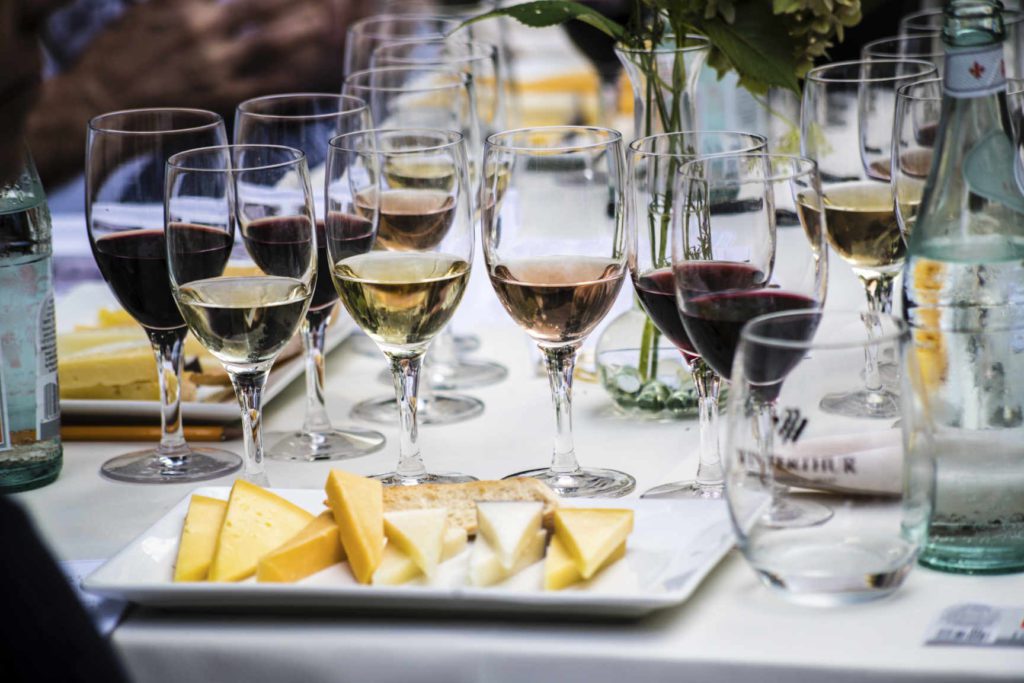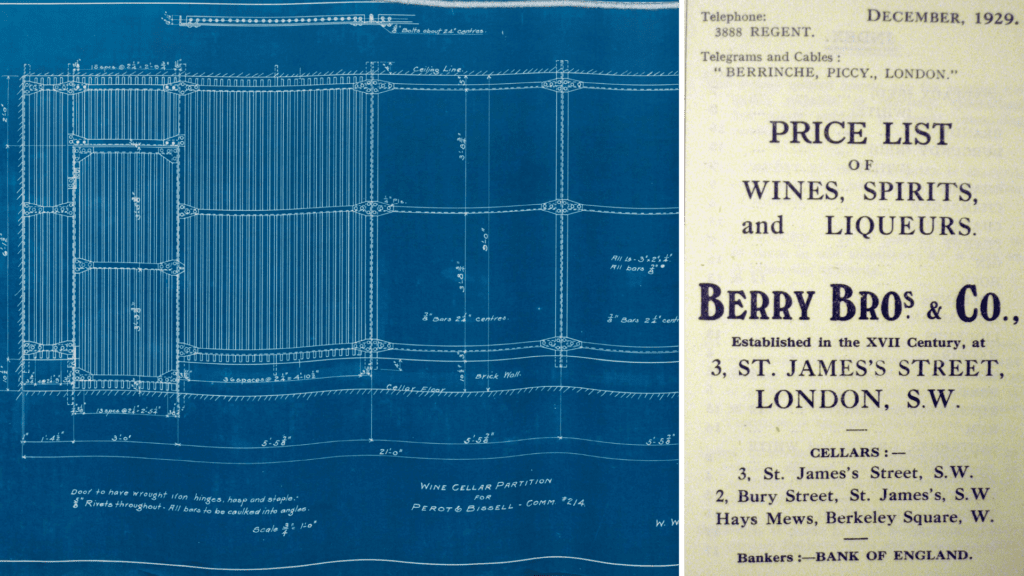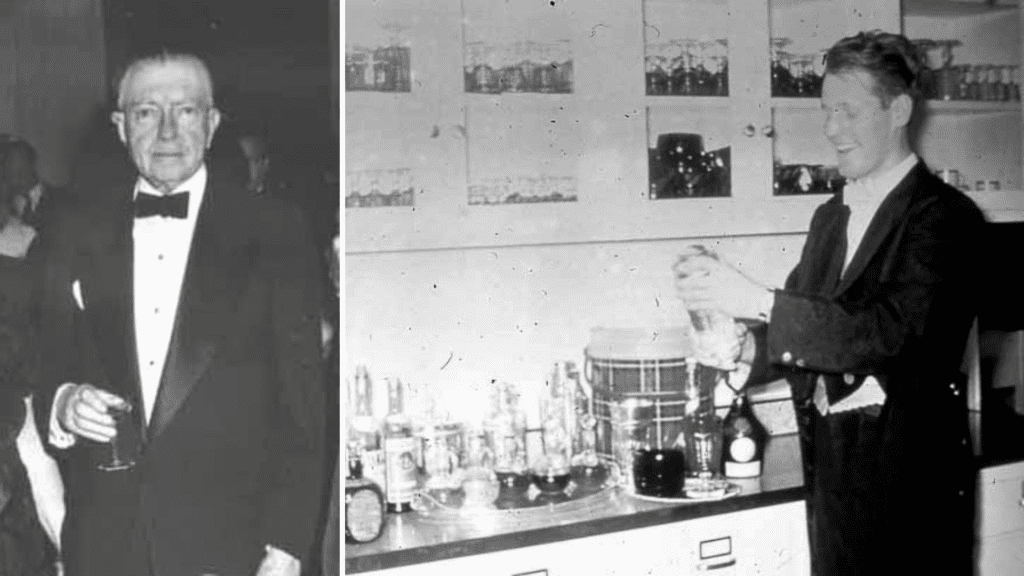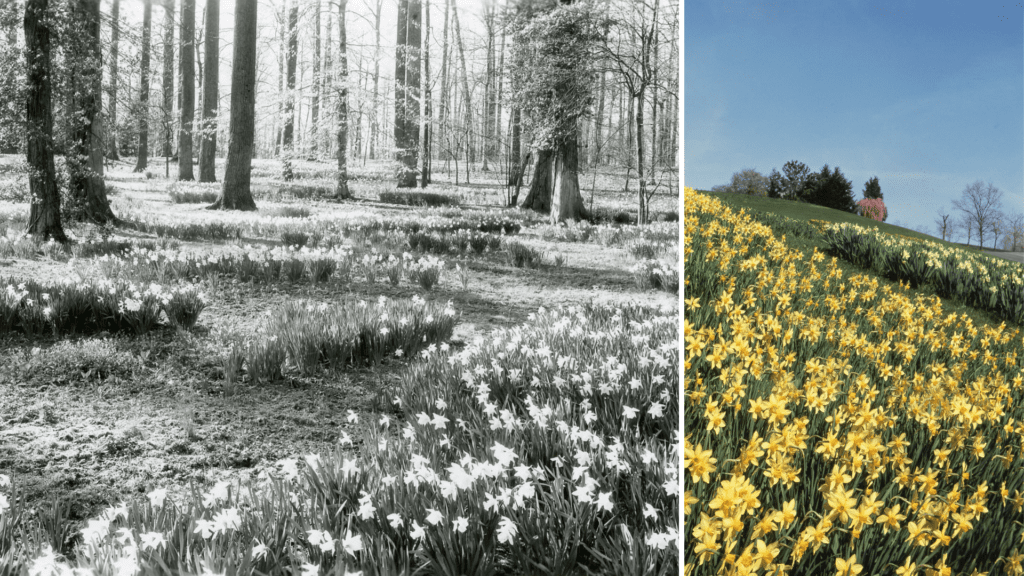
Wine through Winterthur
Winterthur’s founder, Henry Francis du Pont (1880–1969), was interested in wine throughout his life. Today, we continue enjoying this delicious beverage in H. F.’s garden during Wine through Winterthur events.
In the early 1900s, the rise of Prohibition prompted H. F.’s father, Colonel Henry Algernon du Pont, to begin assembling a wine collection. A dozen or so closets, cellars, and storage areas across the estate were used to store wine. When H. F. inherited Winterthur, he continued to enjoy the extensive collection of wines, and add his own, into the 1960s.
There are many interesting examples of 20th-century wine ephemera at Winterthur, from the Prohibition-era Berry Bros. price list from London to inventory lists from the wine cellars on the estate. Over the years, H. F. and museum staff acquired hundreds of wine-related objects that help tell the centuries-long history of this flavorful beverage.

According to his butler, H. F. preferred Champagne to red wine for his meat course, presumably a holdover from his Edwardian youth. In many turn-of-last-century wealthy American households, Champagne (sweeter than today’s versions) was served as the main dinner wine, with sherry for the first soup course, Rhine wines with fish, and clarets with game. After Prohibition ended on January 1, 1934—and with a wine cellar still heavily stocked with vintage wines of all varieties—H. F. developed a particular preference for Krug, the costliest and most rarified of Champagnes.
H. F. was undoubtedly a man whose many talents and interests made him unique among significant collectors of American decorative arts. His attention to dining supports this claim; despite his many responsibilities, evidence suggests that he was as involved with the meals prepared and served at Winterthur as he was with the running of his farm and the managing of his collection. Throughout his life, H. F.’s remarkable attention to the food served in his home reveals much about his character and temperament, as well as his commitment to creating a way of life and expression of ideas that reflected his personal interests and values.

H. F. du Pont’s passion for food and dining was a lifelong, profound reflection of his very personality. His commitment to these domestic matters was tireless, extending from his grand public parties to the private, most intimate hours at table with his family. Regardless of whether he dined with an audience or alone, Winterthur remained the stage whereupon he celebrated food and drink in a way that was uniquely his own.
With warmer weather on the horizon, a lighter, crisper, and more refreshing wine pairs perfectly with the season. Daffodils are one of the few plants H. F. wrote about and one in which he maintained a lifelong interest, and Winterthur is one of the few places in the country where you can see so many in bloom at one time. Many types that blossom here are historic cultivars from the late 1800s and early 1900s. Read about the wines you’ll be sipping within the blooming garden below.

Sparkling
Everyone should start their day with some bubbles! From archived wine inventory lists, it’s clear that the du Ponts enjoyed their sparkling wines, especially Champagne. Champagne is a méthode traditionnelle sparkling wine typically made from a blend of Chardonnay, Pinot Noir, and Meunier from northern France. Other regions around the world also use the traditional method to create sparkling wine with signature flavor profiles of high acidity, notes of apple, and some autolytic flavors (bread, biscuit).
What Pairs Well?
- Oysters
- Mushrooms
- Fried chicken
- Creamy, buttery cheeses (brie, gouda, camembert)
The Chandon Garden Spritz puts a modern twist on sparkling wine by incorporating fresh citrus notes to create the perfect bubbly for spring. This wine is a blend of an exceptional sparkling wine and a unique bitters recipe crafted with locally sourced oranges, which are macerated with dry orange peels, herbs, and spices carefully selected from the finest terroirs in the world.
Chardonnay
Chardonnay is a white wine varietal that has the ability to produce high-quality wines in cool, moderate, and warm climates, making it a highly versatile grape with varying characteristics based on growing conditions.
- Cool climate: high acidity, light to medium body, with flavors of green apple, pear, lemon, lime, and wet stones
- Moderate climate: medium to high acidity, medium to full body, with flavors of lemon, peach, and melon
- Warm climate: full-bodied, medium acidity, with flavors of peach, pineapple and banana
Chardonnay can be oaked (aged in barrels) or unoaked (aged in stainless steel tanks); depending on which fermentation and maturation method is used, the profile of the wine will change accordingly.
What Pairs Well?
- Mild and creamy cheeses (brie, fontina)
- White fish and shellfish
- Creamy or butter-based sauces
The Terrazas Altos del Plata Chardonnay from Mendoza, Argentina, is pale with a hint of green, well-balanced acidity, and full body. Aromas of peach, pear, and pineapple combined with floral notes and undertones of vanilla and coconut create a well-balanced wine.
Rosé
Rosé wine is typically made from black grapes that remain in contact with the skin for a short time, absorbing the color and flavors from the skins. The most common method of making a rosé wine is by short maceration. Fermentation begins the same way as in red wine making, but the skins remain in contact with the fermenting wine for just a few hours, and then fermentation continues at white wine temperatures.
What Pairs Well?
- Seafood (salmon)
- Grilled meats
- Soft cheeses (brie, goat cheese)
The Beach by Whispering Angel Rosé is produced from grapes in the Côteaux d’Aix-en-Provence appellation of France. This wine displays a balanced acidity and a minerality, with delicious citrus and red fruit flavors. It’s the perfect wine to enjoy on a warm afternoon.
Bordeaux Red / Claret
Bordeaux red wines are made from blending certain varietals. The permitted grapes allowed include Cabernet sauvignon, Cabernet franc, Merlot, Petit verdot, Malbec, and Carménère. Bordeaux reds are typically medium to full bodied with black-fruit notes of black currant and plum with earthy notes.
Claret is a British term used unofficially to refer to red Bordeaux wines. As evident on one of the inventory lists, H. F. enjoyed Claret / Bordeaux-style wines frequently.
What Pairs Well?
- Steak, lamb, red meats
- Hard cow’s cheese
Not a true Bordeaux from France but a red blend from the north coast of California, the Skyside Red (Merlot, Syrah, Cabernet sauvignon, Malbec, Petite sirah) has rich aromas of red currant, plum, and blackberry, followed by warm baking spices including cocoa and mountain sage. The wine enters smooth and fills the midpalate, mingling with the flavors of fruit, spice, subtle oak, and chocolate. The tannins and acidity meet gracefully, extending into a lingering finish.
Join us on April 16 and Sip Among the Daffodils at Winterthur!